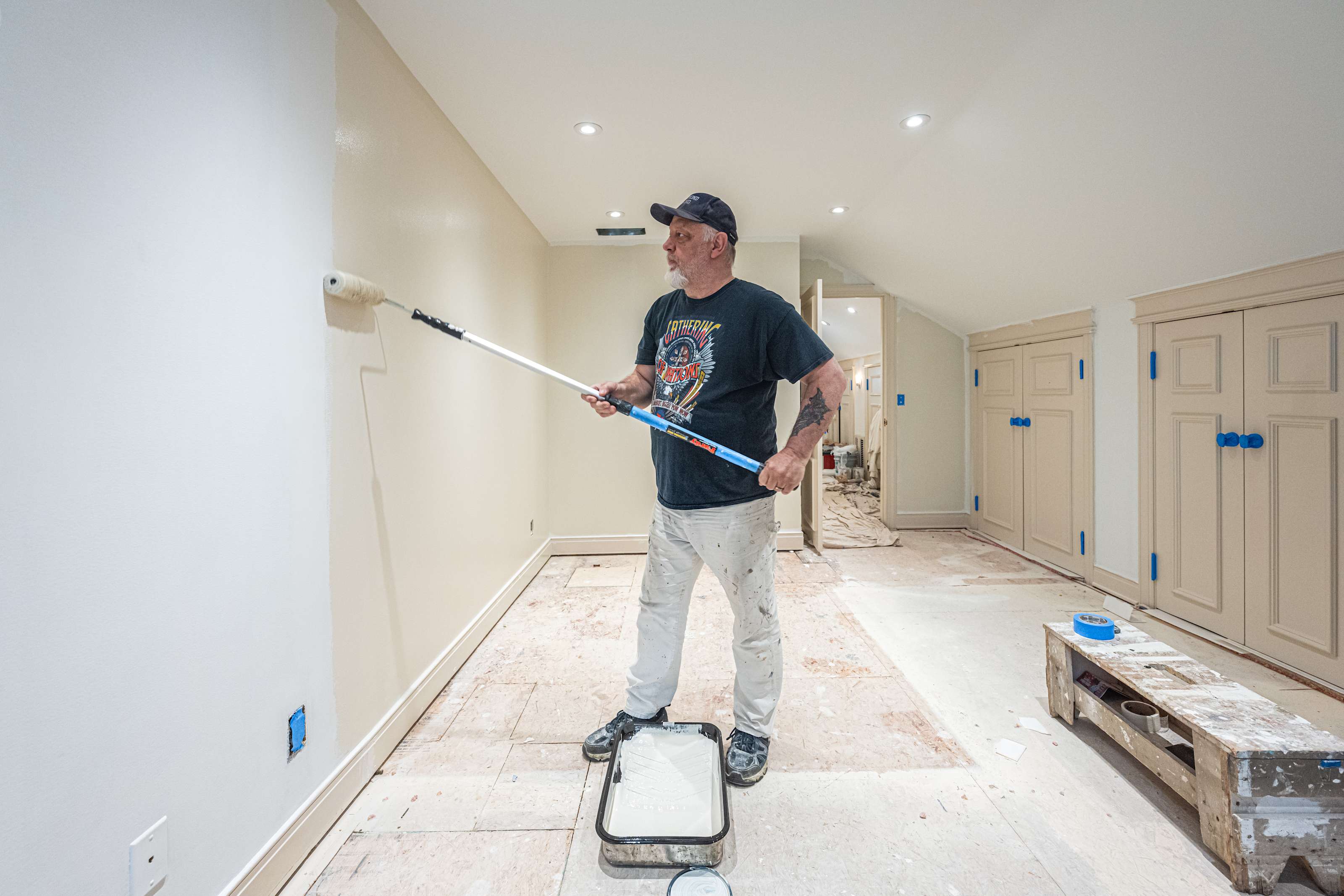
Discover the cost to install window trim. Learn about price factors, labor, materials, and tips to save on your window trim installation project.
It’s not a one-size-fits-all situation


Picking the right white paint is an art form. White isn’t just white—it has many different shades, nuances, and undertones. You also have to consider lighting (both artificial and natural) and your home’s existing color palette. It can be a tricky process, which is why it’s important to know what to look for before you start your home painting project.
Whether you want to turn your living room into a chill oasis, give your home office a fresh look, or brighten up your kitchen, here’s how to pick the perfect shade of white paint for any space.
White can be a warm or cool color, depending on the tone. Warm whites have a yellowish undertone, while cool whites have more of a blue or green undertone. Mixing cool and warm whites is a no-no; instead, adhere to the following guidelines:
If you have a room with cool colors (green, blue, purple), it’s best to pick a white with blue undertones to match. It’s also generally a good idea to do a cool white with blue undertones if the room gets a lot of natural light to offset the warmth of the light.
Go with a warm white if your space has a lot of warm colors (red, orange, yellow). Warm whites also work well with natural materials, like stone, brick, and wood.
Pure, bright white shades have the least amount of undertone. This means you have a little more freedom with decor and accent colors. If you have a bold-colored sofa or chair, for example, a pure white shade might work best. Pure whites also look best with a lot of natural light.
Geography plays a role here, too. If you live somewhere with an abundance of cold, gray weather, a warm white will work well. If, on the other hand, you live in a sunny climate, you may want to opt for a cool, crisp white.

Depending on the lighting in your home, that white paint color you loved in the store may look totally different when you’re at home. Artificial lighting (like lamps and light fixtures) affects the tone of your walls, as does the amount of natural light in your space. Consider the lighting in your home and how it will impact the undertones in your paint.
You can also adjust your light fixtures to match the undertones by pairing the Kelvin rating on your lightbulbs with the undertones of your paint. (Lower Kelvins equal warmer lights and higher numbers equal cooler lights.) Doing this will allow for consistency and flow, giving your space a more polished look.
When it comes to picking white paint, it’s crucial to consider everything else that’s in the room.
The undertones in your white shade should go with everything from your flooring and window treatments to your decor.
Now’s not the time for a tiny paint chip. In order to make sure that you’re picking the right shade, you’ll want to test it by painting swatches as big as you can and in multiple places if possible.

In rooms with a lot of natural light, white paint can look different throughout the day. When you’re doing a test run, check to see how the paint reacts to the natural light source in the morning, late afternoon, and early evening.
When in doubt, enlist the help of a pro. A professional interior painter (or the person at your local hardware store) can answer all your questions and work with you to choose the best white paint color. This way, you’re more likely to get it right the first time, which means you won’t have to make multiple trips to the store.
And if it’s in your budget, hiring an interior designer is always worth it. Designers are usually professionally trained, and thus skilled at understanding what works best in a space.

From average costs to expert advice, get all the answers you need to get your job done.

Discover the cost to install window trim. Learn about price factors, labor, materials, and tips to save on your window trim installation project.

The price of mortar-washing a brick exterior varies widely from single-storey bungalows to large family homes. Learn the average cost to German schmear a house.

The cost to paint the interior of a house in Austin, TX depends on size, layout, type of surface, and more. Learn what factors can influence your total in this guide.

Learn the benefits and drawbacks of the types of paint finishes and which option works best for different surfaces in your home.

Need to refresh your home’s interior but not sure which paint to choose for your doors? Learn about the best paint for interior doors for look and longevity.

You must choose the best paint for metal surfaces to get the smoothest and longest-lasting coverage. We’ve rounded up 12 of the best paints for metal items in this guide.